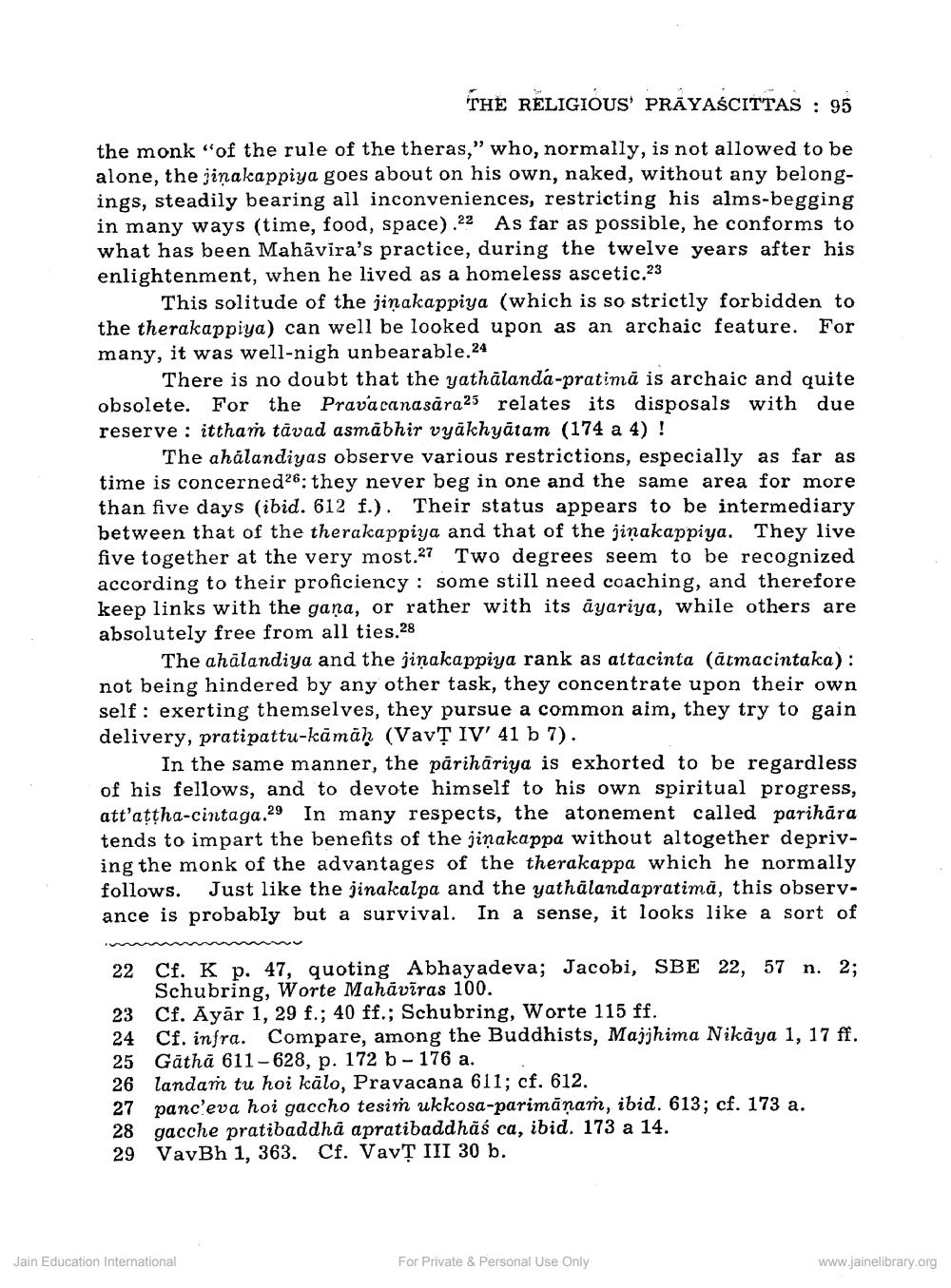________________
THE RELIGIOUS' PRAYASCITTAS : 95
the monk "of the rule of the theras," who, normally, is not allowed to be alone, the jinakappiya goes about on his own, naked, without any belongings, steadily bearing all inconveniences, restricting his alms-begging in many ways (time, food, space).22 As far as possible, he conforms to what has been Mahavira's practice, during the twelve years after his enlightenment, when he lived as a homeless ascetic.23
This solitude of the jinakappiya (which is so strictly forbidden to the therakappiya) can well be looked upon as an archaic feature. For many, it was well-nigh unbearable.24
There is no doubt that the yathalanda-pratimă is archaic and quite obsolete. For the Pravacanasara25 relates its disposals with due reserve ittham tavad asmabhir vyäkhyātam (174 a 4)!
The ahálandiyas observe various restrictions, especially as far as time is concerned 26: they never beg in one and the same area for more than five days (ibid. 612 f.). Their status appears to be intermediary between that of the therakappiya and that of the jinakappiya. They live five together at the very most.27 Two degrees seem to be recognized according to their proficiency: some still need coaching, and therefore keep links with the gana, or rather with its ayariya, while others are. absolutely free from all ties.28
The ahalandiya and the jinakappiya rank as attacinta (armacintaka): not being hindered by any other task, they concentrate upon their own. self: exerting themselves, they pursue a common aim, they try to gain delivery, pratipattu-kämäḥ (VavT IV' 41 b 7).
In the same manner, the pärihariya is exhorted to be regardless of his fellows, and to devote himself to his own spiritual progress, att'aṭṭha-cintaga.29 In many respects, the atonement called parihāra tends to impart the benefits of the jinakappa without altogether depriving the monk of the advantages of the therakappa which he normally. follows. Just like the jinakalpa and the yathalandapratima, this observ. ance is probably but a survival. In a sense, it looks like a sort of
22 Cf. K p. 47, quoting Abhayadeva; Jacobi, SBE 22, 57 Schubring, Worte Mahaviras 100.
23 Cf. Ayar 1, 29 f.; 40 ff.; Schubring, Worte 115 ff.
24
Cf. infra. Compare, among the Buddhists, Majjhima Nikaya 1, 17 ff. 25 Gatha 611-628, p. 172 b-176 a.
26 landam tu hoi kalo, Pravacana 611; cf. 612.
27 panceva hoi gaccho tesim ukkosa-parimanam, ibid. 613; cf. 173 a. 28 gacche pratibaddha apratibaddhaś ca, ibid. 173 a 14.
29 VavBh 1, 363. Cf. VavT III 30 b.
Jain Education International
For Private & Personal Use Only
www.jainelibrary.org




